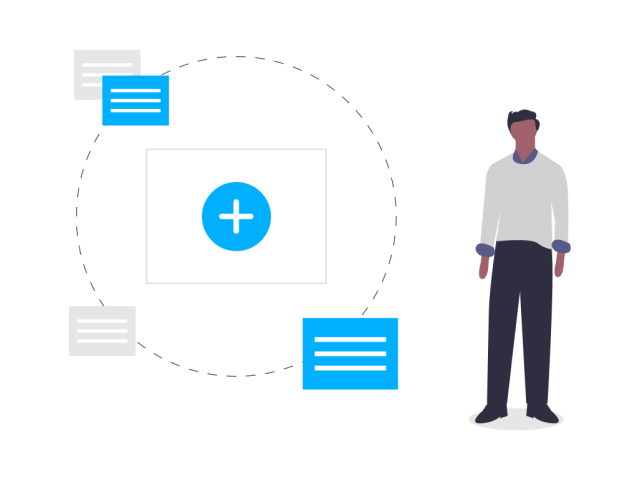In order to answer this question in detail, first you need to look at the overall picture of the development of the IT sector in recent years. Let’s take a look at the numbers and take a look at the future forecasts from the world’s recognized analytical companies.
IT market statistics for the last few years

The IT market from year to year shows a positive development trend. The trend towards ubiquitous robotization and automation of routine production processes is only fueling this growth.
Here is the data of one of the world’s most reputable research and consulting companies specializing specifically in global technology markets — Gartner.
The table shows that the most significant growth is in the share of enterprise software. Moreover, according to forecasts, the growth in this industry of the IT market is only gaining momentum and in 2020 will be almost 11%, and sales in this segment will cross the psychological mark of half a trillion dollars and amount to 507 billion dollars.
Analysts attribute this data to the widespread use of cloud technologies. The development of technologies that provide high-speed and reliable access to the network has led to the transfer of most local solutions to the cloud. It has become more reliable to store data in the cloud, and not on your own servers. Office applications, CRM or a complete IT infrastructure — everything is transferred to the «cloud» or deployed from the very beginning based on cloud technologies.
This, in turn, does not require the purchase of powerful equipment when deploying an IT infrastructure, or changing the existing one for a more modern one when expanding. For most of the staff, relatively weak machines have become enough — after all, all calculations are performed on a cloud server, which can be arbitrarily powerful.
According to the data and forecasts of the same Gartner, in the next 3 years the cloud services market will show growth that is three times higher than the growth of the IT services market, and will amount to 17.5%.
- BPaaS — business process as a service;
- IaaS — infrastructure as a service;
- PaaS — platform as a service;
- SaaS — software as a service.
Note: Rounded figures are used in the table.
Now let’s look at specific numbers and analyze what the IT market is. Is it big or small, and what should be done in order not to get lost among a huge number of companies?
IT market analysis
Let’s turn to the statistics again, only this time — no forecasts, only exact numbers. According to Forbes, the ranking of the most valuable brands of 2019 as of May 23 is headed by Apple.
As you can see, most of the companies are related to the IT industry. This suggests that the IT market is huge and represents great prospects for start-up companies. Especially one of its segments is the IT services market. In 2018, the total expenses of companies on IT services and business services have already exceeded $1 trillion and continue to show a positive growth trend in 2019.
Back to Apple for a moment: how does the company manage to maintain its ninth consecutive number one spot amid falling sales in one of its biggest markets, China? The point is that although electronics sales are falling in some regions, services revenue continues to grow across all regions. This is a vivid example of how the support of a developed product sometimes brings a large profit that is resistant to market fluctuations.
By focusing on immediate development, companies often lose sight of the opportunity to earn on the subsequent maintenance and modernization of the final solution. Although, it would seem, who can know their product better than a developer? That is why customers need to make proposals with a long-term perspective on possible future scaling and technical support. It should be borne in mind that most of them do not like to go into details and may have a superficial idea of their own order. It is necessary to conduct conversations with such clients, covering all aspects of the project with a reserve for further participation in its implementation.
Apple went this way from the very beginning. The company has combined all its products into its own «ecosystem». Using devices inside it is very convenient, pleasant and easy. It seems that there is nothing more perfect than the “Apple ecosystem”. But at the same time, it is necessary to go beyond this ecosystem and the use of gadgets becomes completely unbearable. It was the sale of services that allowed Apple to regain its leading position. We can say that they took the formula of a unique selling proposition (USP) and elevated it to an absolute.
Unique selling proposition and competitive advantage
Let’s talk in more detail about such concepts as «unique selling proposition» and «competitive advantage». At first glance, they may seem similar, but this is not entirely true. What is USP and how does it differ from competitive advantage? Let’s take an example.
Unique selling proposition
For any company that wants to enter the IT market, it is important to understand that the market is a harsh reality in which there is an ongoing struggle for each client. One of the tools of this struggle is the unique selling proposition.
There are cases when the right USP helped companies get out of the clutches of imminent bankruptcy. An example is Avis, a car rental company. In 1962, the company fell on hard times and almost went bankrupt, as competitor Hertz occupied a large part of the market.
The owners of Avis came to the decision that it was necessary to expand the advertising campaign, and turned to the agency Doyle Dane Bertzbach. The agency decided to approach the problem outside the box (at that time) and turned a bad characteristic — «not a leading company» — into a good one.
They made a lot of slogans, the essence of which boiled down to the following: we are only second in the car rental market, so we cannot afford to do our job poorly. We cannot afford half-empty tanks, dirty ashtrays, badly washed cars, or insufficiently polite customer service. After the advertising campaign was launched, Avis increased its market share from 11% to 35% in just 4 years.
Competitive advantage
This is what distinguishes your company from companies competing with you in the market. Literally: anything that gives you an advantage. Competitive advantage can be:
- a successful business idea and its subsequent implementation;
- more qualified and trained personnel;
- a memorable web page address (shop.rf);
- a good company name that reflects the essence of its activities, or indicates a clear superiority over other market participants;
- own production and access to inexpensive and high-quality raw materials.
The list can be continued indefinitely. In today’s market realities, one of the important competitive advantages is well-implemented automation of business processes.
Best practice
Personal business process automation is the development of applications and their configuration for the specific needs of the client. It is more expensive, but has a number of significant advantages over ready-made solutions. The main advantages of personal automation include:
- the ability to connect and work with different data sources within a single system;
- the ability to choose the best solutions from various systems and combine them into your own integrated system;
- tools and applications are developed or modified in accordance with the specific tasks and needs of the client.
As practice shows, small development companies that do not need to reshape the internal structure of departments and the interaction between them are the fastest to adapt to the market.
Personal automation can be used equally effectively in both very large and very small projects. An example is the young and dynamic development company Sailet. She has a lot of completed projects to her credit. All of them were successful, although they vary in degree of complexity and scale.
It is always mutually beneficial to work with small companies engaged in personal business process automation. On the one hand, this is a professional development team, the level of which is often higher than that of employees of large corporations, and on the other hand, this is still a small well-coordinated team in which decisions are made quickly and jointly. There are no “dead phone” situations when orders come down from above and require constant clarifications, while delaying the workflow.
In addition, when ordering automation from small companies, you can be sure that you will not include in the price the cost of maintaining a huge staff of accountants, HR specialists, an advertising department and many others that are necessary for corporations, but which you will have to pay.
Personal automation is needed where standard solutions do not fit or where maximum efficiency is required. In addition, partial personalization is possible with the development of your own frontend for a ready-made backend. For example, the development of mobile and web applications.
